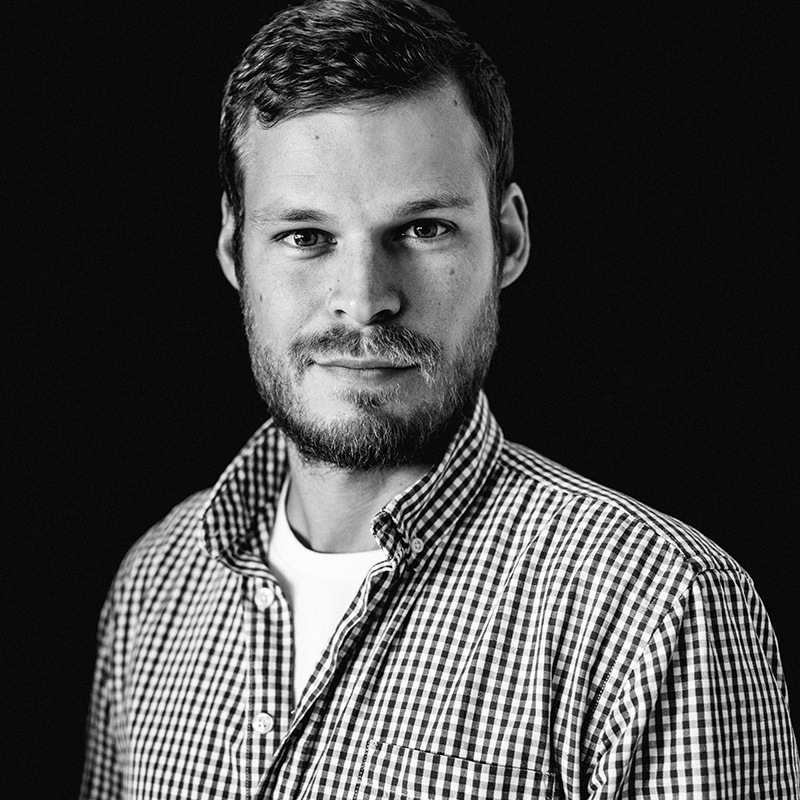Search engine marketers won’t survive as one-trick ponies amongst fluctuating search algorithms mapping an ever-changing digital marketing landscape. The ongoing pressure to account for conversions weighted against the oncoming era of consumer-driven, usability-level personalization is immense.
Digital marketers now have to account for more channels than ever before. Consider that new and existing forms of social media, mobile platforms, user privacy and security, video content, and native advertisements are just the tip of the digital marketer’s iceberg. Today, we have to be able to optimize for more than just the Google index.
E-commerce websites have their own unique considerations when it comes to optimization – and also the most to lose. Sites containing thousands of products have to be easily indexed by Google, they have to make sure that the user has everything they need to trust and purchase from the site, and they have to prove that all of their hard efforts have led to well-earned conversions.
But you can’t please everyone…or can you?
I asked four e-commerce experts (with whom I have no affiliation) to pass down some best practices for optimizing within this complex landscape and to provide some clues on where we should be looking next.
These brand experts from Mexx, Frank&Oak, Linen Chest, and BonLook were kind enough to share their optimization strategies and insider tricks on the trade.
Johnny Russo, E-Commerce Director, Mexx
What strategies do you use to drive traffic and sales to your website (search, social media, user experience, conversions)?
 Paid search has been a tremendous and consistent revenue driver for us, as has email. So those are definitely two channels we pay special and additional attention to, and make sure we test and adapt on a weekly basis. For email, segmentation is a huge part of that. Digital Marketers must leverage the amount of data we have. Some are doing it better than others.
Paid search has been a tremendous and consistent revenue driver for us, as has email. So those are definitely two channels we pay special and additional attention to, and make sure we test and adapt on a weekly basis. For email, segmentation is a huge part of that. Digital Marketers must leverage the amount of data we have. Some are doing it better than others.
Retargeting is also working well and we are testing different strategies in that regard, but retargeted ads to targeted segments obviously have great results. It’s important to note which campaign is driving the best results, depending on your KPIs of course (sales, click-throughs, view-throughs, etc).
Affiliate marketing is also a consistent revenue driver. We pay particular attention to which affiliates we partner with, and which affiliates participate in specific campaigns and exclusives with us.
Social media has definitely brought back some nice traffic levels to our site, but it’s not the revenue driver people hope it will be, at least not at this point in time. But we are completely fine with that, because we use it as a branding and engagement vehicle, rather than a sales driver.
We have done a lot of work on conversion optimization since the site was launched in October 2012. Things like improving the product detail page, adding our 1-800 number on our header and on every page, and changing up some steps in the checkout to make it more seamless and intuitive for the customer. We have seen a nice increase in conversion as a result. But we are not done yet.
We are also doing more and more offsite initiatives and partnerships that, thus far, have been quite fruitful for our online business. We hope to build on those.
What tools do you use offline and online to measure your marketing efforts? How do you track your campaign’s success?
Currently, we are using Google Analytics to track our online efforts and conversions. We are testing other analytics tools to see what the extra benefit is between the free GA platform and a paid analytics platform like KissMetrics.
When we do multi-channel campaigns, we ensure dedicated codes (be it numeric, barcodes, or QR codes) are used to track the effectiveness of the campaign. We have preset targets and forecasts in place to measure against, and that helps determine whether we optimize a campaign, eliminate it, or run it in much the same way.
In your opinion, what are the basic components of a perfectly optimized product page?
[pullquote]Each site, brand, and customer is unique, and testing can help perfect the product detail page.[/pullquote]A perfectly optimized product detail page should contain the following elements: a few front, back, and side shots of what you are selling, in my case for Mexx, it would be fashion items. Keep in mind that while images should be optimized for web (i.e. can’t be huge file formats or this will slow down page loading times), they still need to be sharp enough so the visitor can get an accurate presentation of what they are buying. I’ve seen a lot of blurry images after using zoom tools on a lot of e-commerce sites.
The product detail page should also obviously display current price or promo, shipping fees (don’t hide these or make it hard to find), return policies, size charts, color, style and fit descriptions, and easy to decipher call-to-actions.
Also, if there is a model showcasing the style or product, every effort should be made to display her/his measurement (i.e. 5’8’’) and which size she/he is wearing during the shoot (i.e. model is wearing size small). Perspective goes a long way when selling fashion online.
If you have the chance to use a testing tool, then you can begin testing different elements and designs against each other. There are definitely some best practices to follow, many which I listed above.
What challenges do you face while trying to optimize for search engines and driving users towards online conversions?
The challenge for many online fashion players is that you’re optimizing for styles that may only be online for three months or less. So you spend considerable time and effort to optimize these pages to help drive traffic and conversions to them, but their shelf life is not like, say, a tablet or gadget that may sell on a site for 12-24 months.
Or, think about the book business, or books as a product in general. Some books can stay on a site forever, so they can build up reviews and strength on search engines. If you’re selling a fashionable fall sweater, for instance, and someone reviews it positively or negatively, well, what happens to that review when that sweater is sold out or goes offline?
Some marketers would also say the changing algorithms from Google are also a challenge. And while that may be true, that’s the fun part of being in digital marketing…it’s about constantly changing and adapting or you risk fading away, quickly.
What is your next marketing investment? If you had an unlimited marketing budget, what would your first initiatives be?
Our next marketing investment will be to launch a new ESP/CRM platform.
Soon after launching our emailing platform, the hope is to launch a predictive marketing solution.
And if I had an unlimited budget, I would invest heavily in a mobile, shopable app, as well as a long-term omni-channel solution (i.e. ship to store, ship from store, and pickup in store). While omni-channel requires a significant up front investment, in the long-term, this can actually save costs for a company, not to mention increase conversions and revenue.
How has your industry evolved in the past five years? Do you see a difference in how your competitors deal with marketing initiatives?
I think in the last five years, two major developments have happened in e-commerce.
Firstly, mobile phones and tablets have exploded onto the scene. At first, digital marketers had to be ready to optimize for the browsing experience. But now, we as e-commerce professionals and marketers have to optimize not just for browsing, but for buying. So if you think about this simplistically, marketers not only have to optimize a site and shopping experience for desktops, laptops, and various browsers and SEO tactics, but now we have to account for mobile, mobile search, tablets, apps, and still try to get a holistic view of the customer. That’s a lot of development, data, and user experience and QA testing, to be sure.
Secondly, I think Amazon has helped educate many hesitant or first-time online shoppers to hit the “checkout” button and trust an online site with payment info. I know in Canada, there was initially some trust issues, but now it seems like it’s almost second nature to exchange payment info online, and PayPal has also helped that adjustment. Amazon has also forced us e-commerce-focused digital marketers to up our game and evolve, in areas like internal search, email personalization, site personalization, and relevance.
The constantly changing and evolving e-com landscape makes all of this quite challenging, but super fun.
Kevin Marlet, SEO Specialist, Frank&Oak
What strategies do you use to drive traffic and sales to your website (search, social media, user experience, conversions)?
 We are currently working on some improvements to gain visibility in the search engines. Our acquisition and product teams are continually tweaking and optimizing both our content and interface to make the site more findable and usable. We give a lot of importance to our social platforms: nurturing discussion, sharing music, and posting content generated in-house and by fans. Naturally, we also do a lot of advertising: social, search, display, and real-time bidding. The results of all these projects continue to surprise us.
We are currently working on some improvements to gain visibility in the search engines. Our acquisition and product teams are continually tweaking and optimizing both our content and interface to make the site more findable and usable. We give a lot of importance to our social platforms: nurturing discussion, sharing music, and posting content generated in-house and by fans. Naturally, we also do a lot of advertising: social, search, display, and real-time bidding. The results of all these projects continue to surprise us.
What tools do you use offline and online to measure your marketing efforts? How do you track your campaign’s success?
We’re a bunch of data enthusiasts. So we rely heavily on Looker. This data exploration tool is plugged into our database, allowing us to track every acquisition channel. We therefore have real-time results on what is working…or not working. This immediacy enables us to adjust our efforts and allocation of advertising funds daily, based on the best ROI.
In your opinion, what are the basic components of a perfectly optimized product page?
A good product! And a transparent, easy user experience. We work hard to optimize our product pages so they are appealing to users while also driving revenue. A clean design is very important to us, but product pages must also make it seamless for users to purchase. We A/B test every time we change site content or navigation, updating only when results are better. From a SEO perspective, you have to correctly name and categorize your products so shoppers can easily find what they want.
What challenges do you face while trying to optimize for search engines and driving users towards online conversions?
FrankandOak.com is a gated website, which means that visitors are required to create an account to browse and shop. Being gated has presented a challenge for us where SEO is concerned. Traditionally, gated content has not been accessible to the engines. Our SEO is a work in progress, with exciting things on the way.
What is your next marketing investment? If you had an unlimited marketing budget, what would your first initiatives be?
We are actively seeking and producing a lot of content. By content I mean articles, but also videos, music playlists (our Soundcloud channel is a huge win) with two objectives: giving our customers a 360-degree brand experience, and being discovered by people who don’t know us yet.
How has your industry evolved in the past 5 years? Do you see a difference in how your competitors deal with marketing initiatives?
Targeting is the key. Online advertising is evolving very, very quickly, giving us the ability to deliver ads to micro targeted audiences. This is a massive change to the industry. [pullquote]SEO has also evolved a lot over this past five years. [/pullquote]You need to be a well-recognized brand to rank in an increasingly competitive market. This is where we are headed. We’re only two and a half years old, and we’ve already come a long way. We still have a lot to experience and build. But since the web, and online retail in particular, is evolving at a breakneck pace, the need to experience and build really holds true for all retailers, from legacy to startups.
Michael Ohayon, Web and E-commerce Director, Linen Chest
What strategies have you used to drive traffic and sales to your website (search engines, social media, user experience, conversions)?
 Regarding sales, Linen Chest has tried to go back and perfect the basics, while dabbling in a few other marketing initiatives to get more traffic. Our goal in recent months has been to do less, but to do it right. We are now converting at a higher level with existing customers coming to our site and with our search and referral traffic. We have used our resources to improve our SEO efforts. For example, within the social and blogging universe, we have started testing multiple retargeting campaigns.
Regarding sales, Linen Chest has tried to go back and perfect the basics, while dabbling in a few other marketing initiatives to get more traffic. Our goal in recent months has been to do less, but to do it right. We are now converting at a higher level with existing customers coming to our site and with our search and referral traffic. We have used our resources to improve our SEO efforts. For example, within the social and blogging universe, we have started testing multiple retargeting campaigns.
Additionally, in order to improve conversions with our paid and organic traffic, we have gone back to our roots in testing-testing-testing while optimizing the areas that had the highest amount of missed opportunities. We have also focused efforts towards more efficient email marketing, which is where our highest conversion rates come from.
What tools do you use offline and online to measure your marketing efforts? How do you track your campaign’s success?
We are currently using a multitude of legacy systems and we have reporting in place supported by our enhanced version of Google Analytics. Our next goal is really integrating a full view of Linen Chest clients no matter what their entry points may be and bridge certain gaps by unifying our reports. We concentrate on data that targets low hanging fruit in order to bring up conversions based on specific campaign goals.
In your opinion, what are the basic components of a perfectly optimized product page?
There is no specific formula for this, and a lot depends on the commodity and categories but all in all, there is still a three-prong process to keep in mind.
- Catching the client’s eyes is key: Getting to a product page is one thing (kind of like picking up an item from a rack or a display at a physical store) but what can we as marketers do to include all the information needed to have you place that item in your basket? Having large photos with digital enhancement features such as zoom, video, and multiple product angles help make the customer feel comfortable buying that item online
- Include all the essentials above the fold: Including necessary product descriptions, price, promotions and any other relevant details is absolutely necessary. Make this information as clear as possible.
- Call-to-action: An easily accessible “add to cart” button gives you the best chance to get that product in a basket and move on to the next part of the buying process.
Other factors to perfect product pages go beyond the consumers basic buying impulse (i.e. consider how to please the person who will read the ingredients of a product on the reverse of the box) such as more information, reviews, trust-factor ratings and/or recommended items that you can compare or pair with your product.
What challenges do you face while trying to optimize for search engines and driving users towards online conversions?
We now have access to so much data that a big challenge we face is what to do with it. You can dream up any scenario and if your site is well configured and you have set-up the right tools, the amount of data available to play around with is mind numbing! Data collection has its purpose, but it will vary based upon a company’s unique goals. The important part is getting the right people in place who can translate this data into actionable insights.
Another challenge we face is staying on top of changes from evolving search engines. We too have to evolve, weed out efforts that aren’t working, learn and stay on course with our objectives by adapting to the circumstances and playing field. We plan to continue putting our resources towards the most profitable strategies, such as SEO, AdWords, and retargeting. We continue to rise to the challenge of optimizing and personalizing the search results and landing pages for each user.
What is your next marketing investment? If you had an unlimited marketing budget, what would your first initiatives be?
If Linen Chest had an unlimited budget, we would invest in unique content, content marketing, and aggressive video marketing. I believe there is a lot of opportunity there that isn’t being taken advantage of, but again it all depends on priorities, available resources, and budget.
How has your industry evolved in the past five years? Do you see a difference in how your competitors deal with marketing initiatives?
Describing how the industry has changed in the last five years would take too long, because things change literally every 9-12 months. Sometimes these changes are minor, but over the course of many technology cycles it can mean constant catch up. Major changes in last five years have been mostly with data, social, and mobile – and entire books have been written about these particular areas.
Social has been a growing buzzword, but how to capitalize on it properly can be complex. Depending on your company’s goals, social can be used for a multitude of reasons, but converting directly from social to e-commerce is still a challenge no matter who you speak to.
We are also challenged by how to constantly adapt to the smaller and increasingly faster mobile environment. In some cases this means managing multiple websites on multiple platforms. Responsive design can address some of these challenges, but the needs of each consumer may be different – the trick is finding the right balance for your unique customers. Learn everything about your clients and your segments.
The competition in our marketing environment has become very aggressive. Part of what has created this environment is the tools and technology advancements. [pullquote]We are now seeing budgets shifting from traditional marketing efforts to almost entirely digital and even specifically to individual platforms like mobile.[/pullquote] Additionally, there is a lot more content being produced in combination with personalized marketing efforts used by bigger companies with bigger budgets.
As you’re likely seeing within your inbox, daily emails with different messages based on marketing initiatives and actions are being sent from almost every major brand if you’ve shopped or interacted with them online.The most important takeaway, even in the face of great change and competition, is to use and leverage your consumer data with the resources you have.
Louis-Félix Boulanger, CEO, Bon Look
What strategies have you used to drive traffic and sales to your website (search engines, social media, user experience, conversions)?
 BonLook is a very fashion-forward brand that is exclusively online, so we try to market our products on a variety of sites that share our vision for fashion and style. We view our traffic generation efforts as a ‘community building’ effort, and we try to align our marketing efforts accordingly.
BonLook is a very fashion-forward brand that is exclusively online, so we try to market our products on a variety of sites that share our vision for fashion and style. We view our traffic generation efforts as a ‘community building’ effort, and we try to align our marketing efforts accordingly.
Our focus is making sure our name comes up for targeted groups of people we feel we can serve better than anyone else on the market. Whether it be on social media websites such as Facebook, Pinterest, Instagram, or Twitter, or through search, the focus has to stay on reaching the right customer for our products and services. Once we get people on our site, the focus shifts to offering our customers the best shopping experience possible.
It doesn’t stop there. Once the customer has purchased, we see them as the ultimate brand ambassador. For this reason, we make sure clients remain happy with their experience even after they made their purchase. We poll them shortly after the purchase to ensure everything is all right, and, if the pair is not to their liking, we ensure top quality service to process their returns or exchanges. We feel that keeping our community of shoppers happy is the best way to grow.
What tools do you use offline and online to measure your marketing efforts? How do you track your campaign’s success?
We are big fans of Google Analytics, of course! Our IT team has put a lot of efforts to ensure we get as much information as possible on the shopping and browsing habits of our clientele. We also find using informal polling is a big help to discover a customer’s pain points. If you ask your clients plainly how they feel about you, you tend to get honest responses.
In your opinion, what are the basic components of a perfectly optimized product page?
[pullquote]In our view, a perfectly optimized product page should keep the target customer in mind.[/pullquote]Not every product is the same, so it’s a bit hard to answer. In the case of glasses, we feel our customers are sharing their interrogations between the look of the product and the quality and safety of the item as well. Glasses are in a very special category, straddling the boundary between fashion accessory and medical device. You have to keep in mind that your customers want to look good, but also that they can see!
What challenges do you face while trying to optimize for search engines and driving users towards online conversions?
Our main challenge is being a David in a space increasingly filled with Goliaths. BonLook’s approach has been targeted to a very specific audience from the start and the challenge to us has been to make our message reach the right people. As always in these matters, relevance is key. If you are relevant to your audience and you can deliver great products, amazing service and great overall value, you will succeed.
What is your next marketing investment? If you had an unlimited marketing budget, what would your first initiatives be?
We plan on experimenting rapidly with the omni-channel model and a brick & click strategy. We have certainly seen a lot of players come up with innovative ways to bring their brands to a more traditional retail environment and we think this is greatly aligned with our desire to serve the needs of our customers in the best way possible. If we had an unlimited budget, I don’t think we would change much of that strategy.
How has your industry evolved in the past five years? Do you see a difference in how your competitors deal with marketing initiatives?
I think there has definitely been a great evolution in the space of online eyewear wear in the past five years. One of the main things we are seeing is that the intelligence around the marketing budget has increased dramatically. A lot of thought and considerations have to be put in to your marketing strategy if you wish to succeed. One way we are seeing this play out is that some single-brand eyewear stores are starting to run out of steam. Companies that have a clear vision and plan of what they are building are able to succeed, and that will continue to be the case.
A huge thank you to these experts from Mexx, Frank&Oak, Linen Chest, and BonLook for sharing some of their valuable knowledge and experience!
Featured Image: Bloomua via Shutterstock




